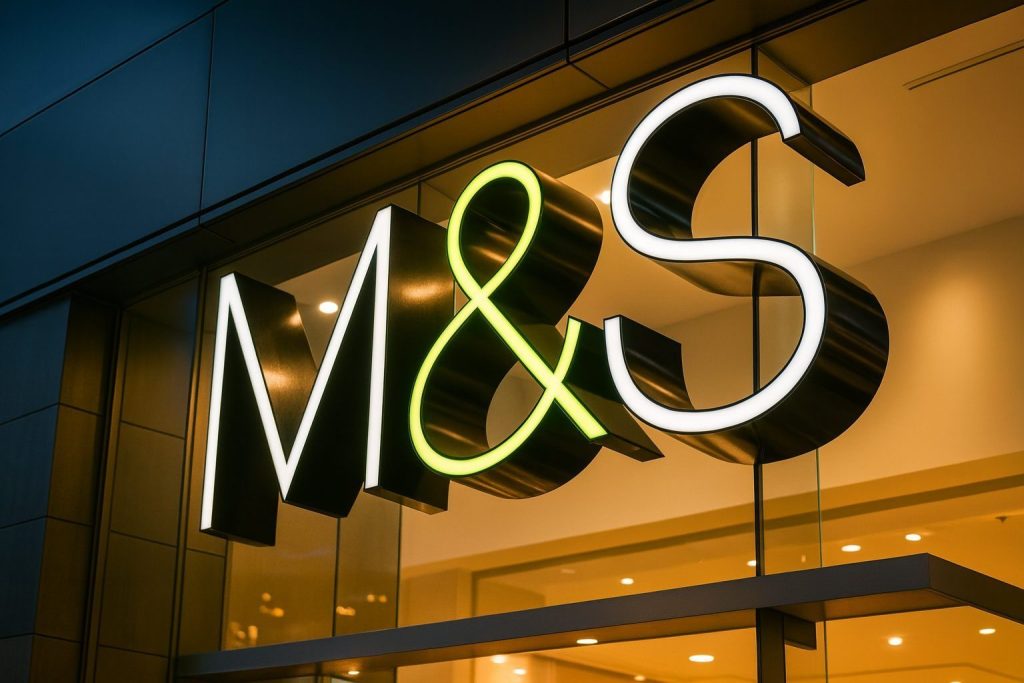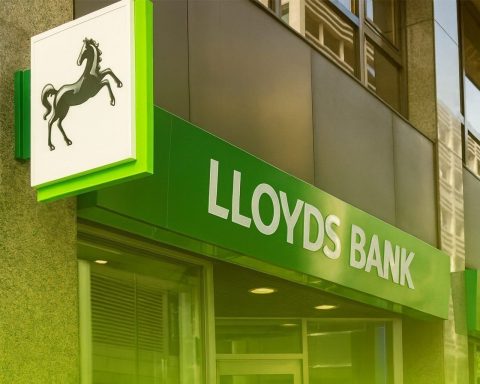London, 27 November 2025 — Lloyds Banking Group plc (LSE: LLOY) is firmly in the spotlight today as fresh research, policy-friendly political news and new lending commitments reshape the outlook for first‑time buyers and for the UK’s biggest retail bank.
Below is a full rundown of everything material that has broken on or directly around 27 November 2025 about Lloyds — from affordability data and product changes to the latest on the LLOY share price.
LLOY share price today: still riding the post‑Budget bank rally
Lloyds shares extended their recent run higher today.
- As of the London close on 27 November 2025, LLOY finished at 94.08p, up 0.30% on the day, according to Investing.com market data. Over the last 12 months the stock has gained about 76.6%, trading in a 52‑week range of 52.44p–95.86p. [1]
- The move comes on the heels of a sharp rally yesterday (26 November), when UK banks jumped after Chancellor Rachel Reeves did not introduce any new, bank‑specific taxes in the Budget. Reuters reports that Lloyds rose around 3.8% on the day, outpacing the FTSE 100’s 0.6% gain. [2]
That decision eased months of market anxiety about a potential levy on bank profits or on interest earned from Bank of England reserves — a key overhang for domestically focused lenders like Lloyds. [3]
From an equity‑market point of view, today’s trading session looks more like consolidation after that Budget‑driven re‑rating than the start of a new leg higher.
Headline news today: Lloyds says first‑time buyer affordability is best since 2015
The biggest Lloyds‑specific story today is its new Affordability Review, published this morning.
According to Lloyds’ own research:
- The typical first‑time buyer (FTB) home now costs 5.9 times average earnings, down from 6.2 last year and the lowest ratio since 2015. [4]
- That’s based on a typical FTB property price of £237,518, up 2.4% year‑on‑year, and average earnings of £40,021, up 6.2%. [5]
- Mortgage payments have barely moved despite higher house prices: a typical FTB now pays about £1,087 per month, just 0.1% higher than a year ago, as falling fixed‑rate mortgage costs offset price rises. [6]
- As a share of income, mortgage payments have fallen from 34.6% to 32.6%, the lowest since mid‑2022. [7]
The Times summarised it bluntly this morning: affordability for first‑time buyers is now the best it’s been in a decade. [8]
This is a meaningful narrative shift for a bank whose fortunes are tightly tied to the UK housing market. After several years of intense affordability pressures, the data suggests the worst of the squeeze may be easing — at least on paper.
Renting vs buying: Lloyds data shows renting is now £259 a month more expensive
Several trade and financial outlets today picked up one particularly eye‑catching line from the Lloyds review: for many would‑be buyers, owning can now be cheaper than renting.
Across Lloyds’ dataset:
- Average UK rent is now about £1,346 per month, up 5.5% over the last year. [9]
- A typical FTB mortgage payment is £1,087 per month. That means renting costs around £259 more each month than buying, and that gap has widened by roughly one‑third in a year. [10]
Letting Agent Today framed the story starkly in its headline: “Renting can be less affordable than buying, warns Lloyds Bank”, highlighting that for those who can clear the deposit hurdle, monthly costs are now often lower as owners than as tenants. [11]
From Lloyds’ perspective, this narrative matters in two ways:
- It supports demand for mortgages, particularly among renters who feel trapped by rising rents.
- It plays to the Group’s long‑standing “Helping Britain Prosper” brand positioning — if buying is more sustainable than renting, Lloyds can argue it is on the right side of the affordability debate.
Today’s spin‑offs: media amplify the affordability story
The affordability review has generated a wave of coverage today (27 November):
- Mortgage Introducer / MPA leads with “Rate cuts and wage hikes improve first‑time buyer affordability”, emphasising that the price‑to‑earnings ratio for FTBs has fallen to 5.9x and that mortgage payments now consume about a third of income, down from 34.6%. [12]
- IFA Magazine and Property Industry Eye both pick up the same dataset, stressing that this is the most favourable affordability picture since 2015 and focusing on the squeeze on renters versus owners. [13]
- The coverage is broadly positive for Lloyds, presenting the bank as an authority on housing data and as a lender willing to use its balance sheet to get people onto the ladder.
For Discover and social feeds, the hook is simple and shareable:
“In many parts of Britain, you now save money each month by having a mortgage instead of renting.”
That’s a powerful meme for a bank that dominates the UK mortgage market.
Who can actually benefit? Lloyds’ £1bn FTB Boost change explained
Data only matters if people can act on it. That’s where today’s product news comes in.
Although the Group’s formal press release went out yesterday (26 November), Financial Reporter and other trade titles are running it today as a fresh story: Lloyds is easing criteria on its “First Time Buyer Boost” range and committing an extra £1bn of lending. [14]
Key points for borrowers:
- Minimum household income for FTB Boost falls from £50,000 to £40,000. [15]
- Eligible first‑time buyers can now borrow up to 5.5x income with Lloyds or Halifax, up from around 4.49x previously. [16]
- On the example Lloyds uses, a buyer earning £40,000 with a 10% deposit sees their maximum loan jump from £179,600 to £220,000 — roughly a 22% boost. [17]
- Since the product launched in August 2024, over £8bn of lending has been pledged and more than 15,000 buyers helped; with the new £1bn, the total FTB Boost commitment rises to £9bn. [18]
- Crucially, self‑employed first‑time buyers will now also be able to access the 5.5x income multiple, something many brokers have been pushing for. [19]
Homes director Andrew Asaam argues that the change lets Lloyds “make better lending decisions for those who can genuinely afford to borrow more” — an implicit nod to the Financial Conduct Authority’s updated guidance in April that gave lenders more flexibility around stress‑testing rates. [20]
For investors, today’s coverage reinforces the message that Lloyds is leaning into mortgage growth at a moment when political pressure is heavily focused on “unlocking” home ownership.
Regional winners and losers: Inverclyde vs Kensington & Chelsea
The Lloyds report – amplified by trade titles today – also highlights just how uneven the UK’s housing market remains.
According to the bank’s data: [21]
- The North East of England is the most affordable region for FTBs, with a price‑to‑earnings ratio of 3.9 and mortgage costs around 22% of income.
- Scotland follows with a ratio of 4.0, while Wales (5.3) and Northern Ireland (5.1) sit in the middle of the pack.
- At the expensive end, Greater London (9.3), the South East (7.3), Eastern England (7.0) and the South West (6.2) remain the most stretched, even though affordability has improved in all four regions.
- When you zoom in to local areas, Inverclyde on Scotland’s west coast tops the affordability charts with a ratio of 3.4, followed by Kingston upon Hull at 3.5.
- At the other extreme, Kensington & Chelsea posts a price‑to‑earnings ratio of 17.7, with Elmbridge in the South East at 16.6.
This regional skew is important for Lloyds’ loan book: it anchors a significant slice of its growth in areas where borrowers look structurally less stretched, while still leaving the Group heavily exposed to London and the South East, where any downturn would bite hardest.
Strategic backdrop: £35bn lending push, Curve acquisition and ongoing share buybacks
Beyond today’s affordability headlines, investors are also digesting several recent strategic moves that frame the Lloyds story on 27 November.
£35bn in new business finance for 2026
Yesterday the Group confirmed it will make over £35bn of new finance available in 2026 to companies operating and investing in the UK, including £9.5bn earmarked for SMEs. [22]
CEO Charlie Nunn linked the commitment to the bank’s role in funding infrastructure, housing and regional development, noting that Lloyds has helped arrange over £100bn of infrastructure‑related financing over the last five years. [23]
For LLOY holders, this signals:
- A continued tilt towards business and infrastructure lending, which can diversify earnings away from pure UK mortgages.
- A willingness to support the government’s growth agenda, something that likely also helped the sector avoid fresh taxes in yesterday’s Budget. [24]
Digital push: acquiring fintech Curve
Last week, Lloyds announced that it will acquire UK fintech Curve, a digital wallet that lets users aggregate multiple cards and payment methods into a single app. The deal, widely reported at around £120m, is expected to complete in the first half of 2026, subject to regulatory approval. [25]
Key details from Banking Dive’s coverage and the Group’s own investor materials: [26]
- Curve has about 6 million customers; Lloyds reaches 28 million.
- The acquisition is pitched as strategic rather than financial – the bank does not expect a material impact on 2025–26 guidance.
- The move dovetails with Lloyds’ ongoing branch‑closure programme and mobile‑first strategy, giving the Group a more sophisticated wallet and spend‑insights capability.
Some Curve investors have objected publicly to the sale price, arguing it undervalues the fintech, but for Lloyds the deal potentially accelerates its digital roadmap at a modest cost.
Capital returns: active in the buyback market
In the background, Lloyds continues to shrink its share count via buybacks:
- A Form 6‑K filed in the US today confirms that the Group repurchased about 4.3m ordinary shares on 26 November 2025, to be cancelled as part of its existing buyback. [27]
- Earlier this month, an Investegate RNS showed Lloyds buying over 10.4m shares on 17 November at a volume‑weighted average price of around 91.15p, again for cancellation. [28]
Combined with the strong share price performance over the last year, these buybacks have a gearing effect on earnings per share and dividends — a key part of the investment case for income‑focused holders.
What it all means for Lloyds (LLOY) investors
Putting today’s news together, the Lloyds story on 27 November 2025 looks like this:
- Macro and policy tailwinds are improving.
- The Labour government has, for the second Budget in a row, declined to hit banks with a special tax, even as it raises other revenues — a relief that has powered a sector‑wide rerating. [29]
- Housing affordability is moving from headwind to cautious tailwind.
- Lloyds’ own data show better FTB affordability than at any point since 2015, with mortgages taking a smaller chunk of income and renting becoming materially more expensive than owning. [30]
- The Group is leaning into that narrative with product tweaks.
- Reducing the FTB Boost income threshold to £40k, opening it to the self‑employed and boosting loan‑to‑income caps to 5.5x are all designed to convert affordability headlines into actual lending growth. [31]
- Strategic initiatives support a higher‑quality growth story.
- The £35bn lending pledge and Curve acquisition both reinforce Lloyds’ positioning as a bank backing UK growth while upgrading its digital capabilities. [32]
- Valuation and risk remain key debates.
- After a 76%+ 12‑month rally, some commentators (e.g. recent opinion pieces on the Motley Fool UK) have flagged the risk of earnings normalising and credit costs rising into 2026, even if we can’t see their arguments in full due to paywalls. [33]
For now, though, today’s flow of information is net supportive for sentiment: Lloyds looks like a bank benefiting from friendlier regulation, improving housing affordability and a more aggressive digital and lending strategy, all while continuing to return capital via buybacks.
Important note
This article is for information only and does not constitute investment advice or a recommendation to buy or sell any security. Always do your own research and, if needed, consult a regulated financial adviser before making investment decisions.
References
1. www.investing.com, 2. www.reuters.com, 3. www.reuters.com, 4. www.lloydsbankinggroup.com, 5. www.lloydsbankinggroup.com, 6. www.lloydsbankinggroup.com, 7. www.lloydsbankinggroup.com, 8. www.thetimes.com, 9. www.lloydsbankinggroup.com, 10. www.lloydsbankinggroup.com, 11. www.lettingagenttoday.co.uk, 12. www.mpamag.com, 13. ifamagazine.com, 14. www.financialreporter.co.uk, 15. www.financialreporter.co.uk, 16. www.financialreporter.co.uk, 17. www.financialreporter.co.uk, 18. www.financialreporter.co.uk, 19. www.financialreporter.co.uk, 20. www.lloydsbankinggroup.com, 21. www.lloydsbankinggroup.com, 22. www.lloydsbankinggroup.com, 23. www.lloydsbankinggroup.com, 24. www.reuters.com, 25. www.bankingdive.com, 26. www.bankingdive.com, 27. www.stocktitan.net, 28. www.investegate.co.uk, 29. www.reuters.com, 30. www.lloydsbankinggroup.com, 31. www.financialreporter.co.uk, 32. www.lloydsbankinggroup.com, 33. www.fool.co.uk










